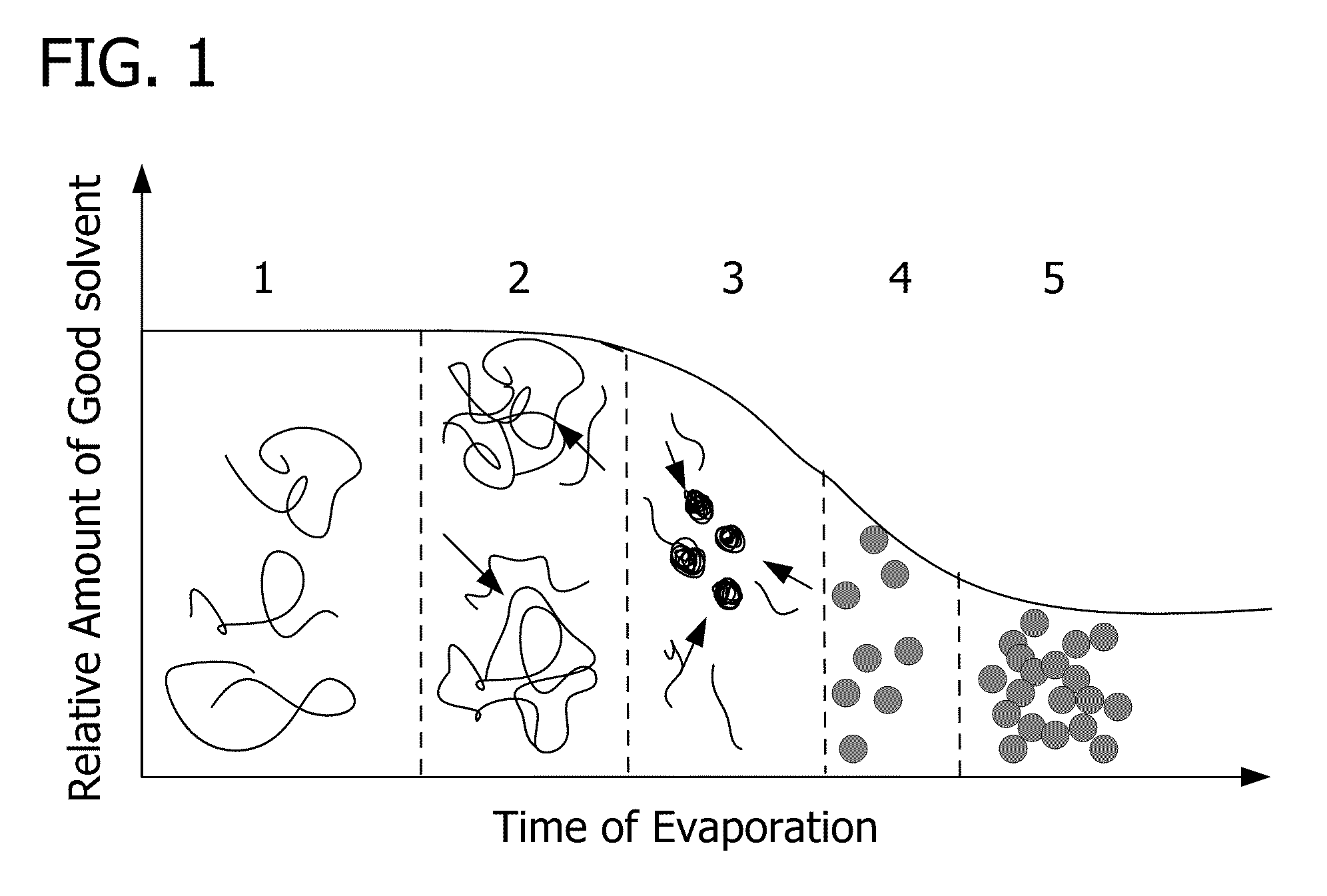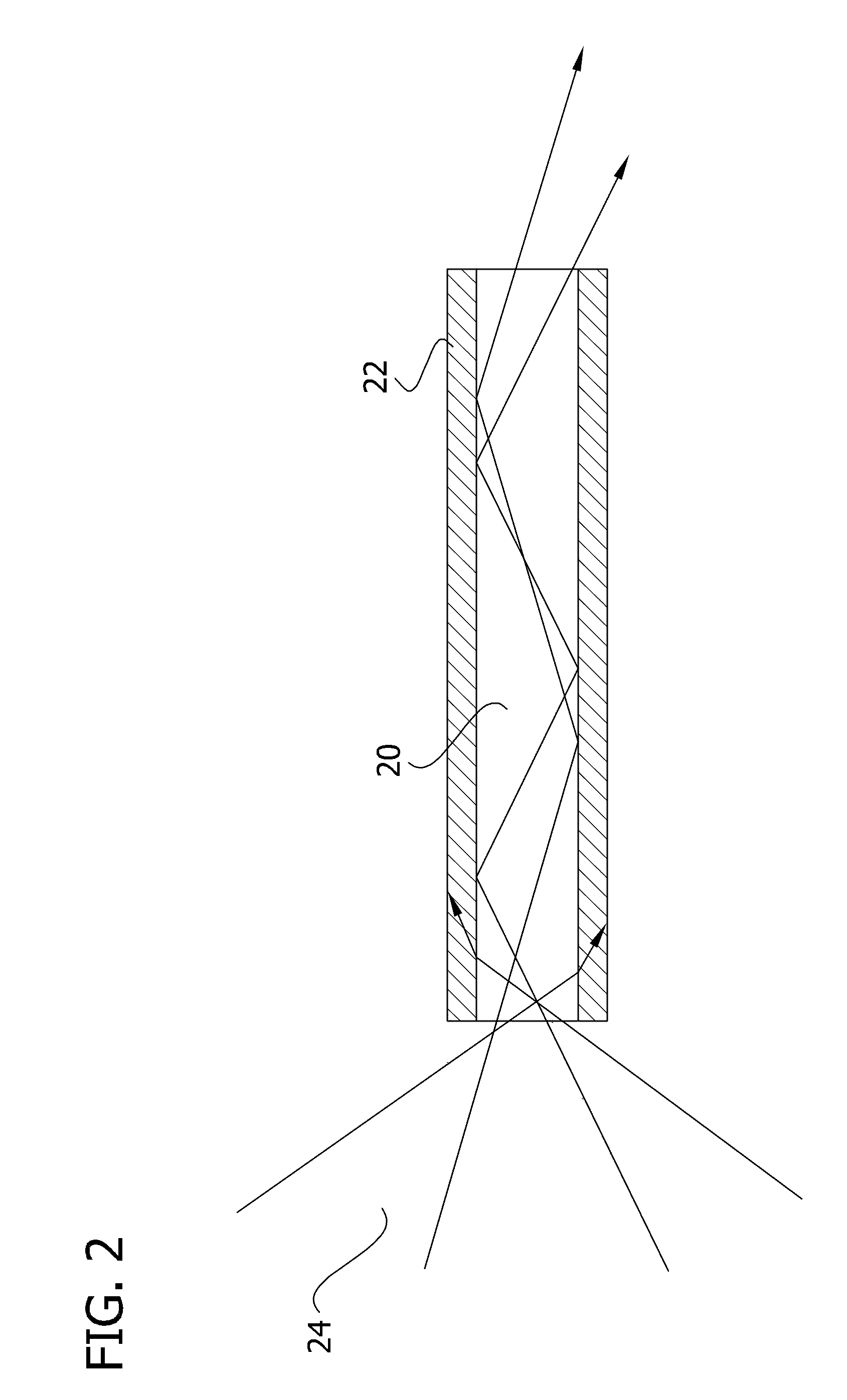Ultra-low refractive index high surface area nanoparticulate films and nanoparticles
a technology of nanoparticulate films and ultra-low refractive index, which is applied in the field of ultra-low refractive index high surface area nanoparticulate films and nanoparticles, can solve the problems of initiating buckling and cracking of films, affecting the performance of materials, etc., and achieves low refractive index and high surface area. , the effect of great thickness
- Summary
- Abstract
- Description
- Claims
- Application Information
AI Technical Summary
Benefits of technology
Problems solved by technology
Method used
Image
Examples
example 1
[0102]For the preparation of films, polymethylsilsesquioxane (PMSSQ) having a molecular weight, Mn, of 6000-9000 (Techneglas; Perrysburg, Ohio; Gelest, Inc; Mossisville, Pa.), poly(propylene glycol) (PPG) having a molecular weight, Mn, of 424 (Sigma-Aldrich; St. Louis, Mo.) and propylene glycol methyl ether acetate (PGMEA) (Sigma-Aldrich; St. Louis, Mo.) were used as supplied. A 50% by weight solution of PMSSQ was prepared by dissolving 5 g of PMSSQ in 5 g of PGMEA and designated as solution A. This solution was then filtered using a 0.25 micron filter. A 50% by weight solution of PPG was prepared in PGMEA by dissolving 5 g of PPG in 5 g of PGMEA and designated as solution B. Solutions A and B were then sonicated separately for at least 10-15 minutes to ensure complete dissolution of the respective solutes. After obtaining clear solutions, Solution A was mixed with solution B and sonicated for an additional 5 minutes to obtain a homogenous solution. This solution was then taken in a...
example 2
Physical Characteristics
[0106]Nitrogen adsorption-desorption isotherms for samples prepared as described in Example 1 were analyzed using a Quantachrome Autosorb-1 automated gas sorption system and the surface areas of the samples were computed using BET method. For the analysis, films were prepared on silicon substrates from one day aged solutions. The nanoparticulate powder was obtained by carefully scraping the film from the substrate. Since the samples are hydrophobic, these were degassed at room temperature for twelve hours. The isotherms obtained for these films shown in FIG. 7A are classified as Type IV, as normally observed in typical mesoporous samples (pore size of 2-50 nm as defined by IUPAC). However, it is seen that that there is a sharp increase of the volume of nitrogen adsorbed at relative pressures (P / Po) in the range of 10−7-10−4. Therefore, it is expected that these samples are likely to exhibit both microporosity and mesoporosity.
[0107]The BET plots shown in FIG....
example 3
Nanoparticulate Films
[0111]Nanoparticulate films were prepared by spin deposition onto freshly 1:10 HF:DI dipped silicon substrates followed by a heat treatment step of 400 C for 5 minutes, using the procedures described in Example 1 except as otherwise noted. These films were prepared with 14% OH content PMSSQ from Techneglas Inc, (GR650F). The films were prepared with one day aged solution. FIGS. 9A and 9B depict the SEM of the film's cross section. The films prepared from 2% OH content PMSSQ (Gelest, SST-3M02), on the other hand, gave nanoparticulate films with particle sizes ˜40 nm (see FIG. 7). The difference in particle size between the 14% (Mw 5000) and the 2% PMSSQ (7000-8000) may be due to the differences in molecular weight between the two different PMSSQ. 2% OH content solutions tend to take longer time to gel because of the presence of less number of reactive sites.
PUM
| Property | Measurement | Unit |
|---|---|---|
| mean pore size | aaaaa | aaaaa |
| mean pore size | aaaaa | aaaaa |
| dielectric constant | aaaaa | aaaaa |
Abstract
Description
Claims
Application Information
 Login to View More
Login to View More - R&D
- Intellectual Property
- Life Sciences
- Materials
- Tech Scout
- Unparalleled Data Quality
- Higher Quality Content
- 60% Fewer Hallucinations
Browse by: Latest US Patents, China's latest patents, Technical Efficacy Thesaurus, Application Domain, Technology Topic, Popular Technical Reports.
© 2025 PatSnap. All rights reserved.Legal|Privacy policy|Modern Slavery Act Transparency Statement|Sitemap|About US| Contact US: help@patsnap.com



